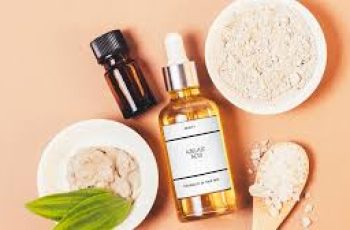Acne is something that many of us have dealt with at one point or another. It can be frustrating and even embarrassing, but the good news is that there are ways to treat it effectively. As an Esthetician, I have a few favorite Lira treatments and products that I like to use when treating acne.
In this blog post, I’m going to share some of my top picks for of Lira Clinical products that work amazingly for acne in both the treatment room and your home care regimen.
For Skincare Professionals
SAL PULP: A GREAT INTRODUCTION TO LIRA TREATMENTS
When someone comes to my clinic for the first time to treat acne, Sal Pulp is usually my go-to introduction treatment. This peel delivers results and is great because even just one layer and a retinal seal can help to calm down inflammation.
BETA SAL AND RETINAL: A POWERFUL COMBINATION
Once we’ve introduced Sal Pulp, the next step is usually to start using Beta Sal and Retinol together in a layered form. I love using Beta and Sal together because the retinal seal really seals everything in and gives the skin an extra peel. They’re also amazing on their own.
Plus, my clients love to peel! During the peel process, I always like to offer the reminder to give it time. Your skin may not peel right away or even dramatically and just because your skin isn’t peeling doesn’t mean that it’s not accepting the acids, peptides, and plant stem cells in the product.
For Home Care
HYDRATION IS KEY, EVEN FOR ACNE-PRONE SKIN
One of the most common misconceptions that people with acne have is that they should not moisturize their skin. This thought process stems from the belief that since acne-prone skin is already oily, moisturizing will only make it worse. However, this is far from the truth.
In fact, the most common issue that people with acne face is an unbalanced pH level. Ensuring that you’re consistently hydrating your skin will help to balance the pH level and actually prevent your skin from producing excess oil.
Remember this: Your skin is smart and will regulate itself if you give it what it needs.
Bio Caviar Crème
Mystiq Iluminating Beauty Oil
That’s exactly why I recommend using products like Mystiq Beauty Oil and Caviar Creme, even for clients with acne.
In fact, every single one of my clients who has acne is using Mystiq Beauty Oil as a part of their night-time regimens.
Using Caviar Creme on even intense, oily cystic acne can be so beneficial. Plus, it has a light, non-greasy texture that won’t clog your pores or leave your skin feeling heavy or more oily.
I always recommend using these products at night, so that your skin can fully absorb all of the amazing nutrients and moisture. And trust me, when you wake up in the morning, your skin will feel so soft, smooth, and hydrated – they’re honestly my top favorite Lira products for acne-prone skin.
Ultimately, it’s all about being aggressive with your home care and giving your skin the hydration it needs.
AGGRESSIVE TREATMENTS NEED EXTRA HYDRATION
When clarifying treatments for acne, the skin definitely needs that extra hydration. That’s why I feel comfortable being a bit more aggressive with my peels in the treatment room when I know that my clients are using products like Caviar Creme and Beauty Oil at home and are going to be committed to their home care. We can all rest easy knowing that the skin will heal more effectively when it has the right products to support it.
FINAL THOUGHTS
Dealing with acne can be tough, but with the right treatments and products, you can see great results. For my fellow Estheticians that are supporting their clients with acne, I highly recommend trying Sal Pulp as an introduction to Lira treatments, as well as using Beta Sal and Retinol together.
Don’t forget that hydration is key, even for acne-prone skin. Having the support of your Esthetician, being committed to your skincare routines outside of the treatment room, and using hydrating products, like the ones recommended above will help give your skin the boost it needs to regulate itself!
Want more tips, recommendations, and the inside scoop on my most-effective protocols?
DQH Knowledge drop: In your 20s, your skin cell turnover decreases. (Cell turnover is a key component in keeping your skin youthful.) You know what else slows down? Your collagen production. Starting in your 20s, collagen decreases by about 1 percent per year. Should you want to prevent fine lines and wrinkles, start by eliminating behaviors that contribute to premature aging. “If it’s bad for you, it’s bad for your skin,” says dermatologist Michel Somenek.
“Cigarette smoking reduces blood flow to the skin and causes premature wrinkling and a dull skin texture. Making the repeated pursed motion to inhale can also cause smoker’s lines. Alcohol and recreational drugs are toxins for the skin that damage its cellular structure and DNA,” Somenek tells us. “The faster you eliminate vices while you are young, the better chance your skin and body have to recuperate.” Also, adopting an anti-aging routine in your 20s is key. After all, the best offense is a good defense. We spoke to Somenek and experts Joshua Ross and Audrey Kunin to find out more.
Keep reading for the best anti-aging products for your 20s, according to skincare professionals.
Sunscreen
“We all know that the sun is the number one cause of skin aging and starting the prevention in your 20s is very important,” Ross says. “The majority of your sun damage won’t start to appear until you’re in your 30s, so don’t wait until you see it surface or you’ll be behind the curve. Stay ahead of it with a good-quality zinc-based sunscreen worn daily.”
Farmacy Green Defense Daily Mineral Sunscreen
An invisible sunscreen with SPF 30, plus botanical extracts meant to protect skin with tons of antioxidants. Bonus: It’s clean and fine to use under makeup.
Bareminerals Complexion Rescue™ Tinted Moisturizer Broad Spectrum SPF 30
Although we recommend you use your SPF and moisturizer separately, we also understand moments when you don’t have time or energy for that extra step. For those times, this bareMinerals moisturizer is a great thing to have on hand.
Vitamin C Serum
“A great introduction to anti-aging is to start with a vitamin C serum in your morning skincare routine,” Ross says. “It’s a powerful antioxidant that will neutralize free radicals and brighten the skin.” He adds that it’s a great way to counteract the effects of the sun’s harmful rays, which, as previously mentioned, are among the biggest causes of premature aging.
Drunk Elephant C-Firma™ Vitamin C Day Serum
The Drunk Elephant C-Firma is a lightweight serum that promises to give skin a glow by combining the brightening powers of vitamin C with ferulic acid, l-ascorbic acid, and vitamin E. The included sodium hyaluronate is meant to replace hydration loss, so you shouldn’t have to deal with any irritation.
Sunday Riley C.E.O. Rapid Flash Brightening Serum
This potent serum is jam-packed with vitamin C (15 percent, to be exact), which means it’s a potential superstar at both brightening skin and dousing it in antioxidants.
Peptides
Using peptides on your skin has many benefits, says Somenek. “The skin barrier is what defends the body against pollution, UV rays, bacteria, and toxins. It can be damaged by several everyday factors. Using topical peptides aids in building a stronger barrier,” he says. “Peptides comprise elastic fibers, which are a type of protein. These fibers help to make skin appear taut and firm. Peptides can also help repair damaged skin, relieve inflammation, and even out skin tone. Some peptides can kill acne-causing bacteria that is common in 20-somethings.”
Kunin agrees, saying, “Peptides are an excellent entry point for supporting collagen.” She recommends looking for face and eye treatments that contain these collagen-boosting powerhouses.
Charlotte Tilbury Magic Eye Rescue Cream
This Charlotte Tilbury super-emollient eye cream has a base of coconut oil and shea butter (read: it’s incredibly hydrating). Botanicals plus peptides are meant to help reduce dark circles and boost collagen, respectively.
This creamy moisturizer serves up potent collagen-boosting peptides and pycnogenol, and antioxidant-rich vitamin C. “Instead of sitting on top of the skin, peptides penetrate the outer layer so they go deep. The ‘signals’ they send tell the cells to produce elastin and collagen, which are needed for youthful-looking skin,” explains Somenek.
At-Home Peel Pads
Remember that skin cell turnover fiasco we talked about earlier? One way to help support it is by exfoliating. “Exfoliation is important to help keep skin fresh and luminous,” Kunin says. She recommends using at-home peel pads as an easy and effective way to exfoliate.
“The goal in your 20s is to fight the slowing pace of cell turnover. It is wise to use products that gently exfoliate, yet still remove oil and other impurities. Products that have Alpha Hydroxy Acids (AHA) or Beta Hydroxy Acids (BHA) are a good choice.”
According to Somenek, you should only exfoliate two to three times a week. “People of all ages are guilty of over-exfoliating and that can be too much of a good thing,” he says.
Dermadoctor Kakadu C Intensive Vitamin C Peel Pad
A few swipes of this Derma Doctor powerful peel pad promise to leave your skin glowing and smooth, thanks to the seven (yes, seven) types of chemical exfoliants, including AHA and BHA. It also contains vitamin C via Kakadu plum extract for added brightening and antioxidant protection.
KEY INGREDIENTS Kakadu plum extract is sourced from the Kakadu plum, a fruit grown in northern Australia. It contains vitamin C, which restores the skin’s natural barrier, increases collagen production, and soothes irritation.
Dr. Dennis Gross Skincare Alpha Beta® Universal Daily Peel Pads
These are the gold standard of peel pads, with a cult following and over 900 five-star reviews on Sephora. They’re easy to use and contain a blend of anti-aging exfoliating acids.
Emollient Night Cream
“In your 20s, you need to start upping the hydration in your skincare routine. You may have been cautious of over-moisturizing because of acne in your teens, but as you enter your 20s, your skin transitions and becomes drier,” Ross says. “I recommend an emollient night cream added into your evening skincare regimen.”
“Twenty-somethings need to make sure that they are not using creams that will clog their pores and cause excess oil production,” says Somenek. Opt for non-comedogenic products.
Cerave Skin Renewing Night Cream
One great choice is the CeraVe Skin Renewing Night Cream, which is a non-comedogenic night cream that leaves skin soft and glowy. It combines the moisturizing powers of ceramides and hyaluronic acid.
RoC Retinol Correxion Max Hydration Creme
“The best night cream ingredients contain retinol, benzoyl peroxide, and/or salicylic acid or hyaluronic acid. The goal is to moisturize, yet remove excess oil,” says Somenek. This Roc Retinol Correxion cream fits the bill as it contains both hyaluronic acid and retinol so it promises to moisturize while also being non-comedogenic.



